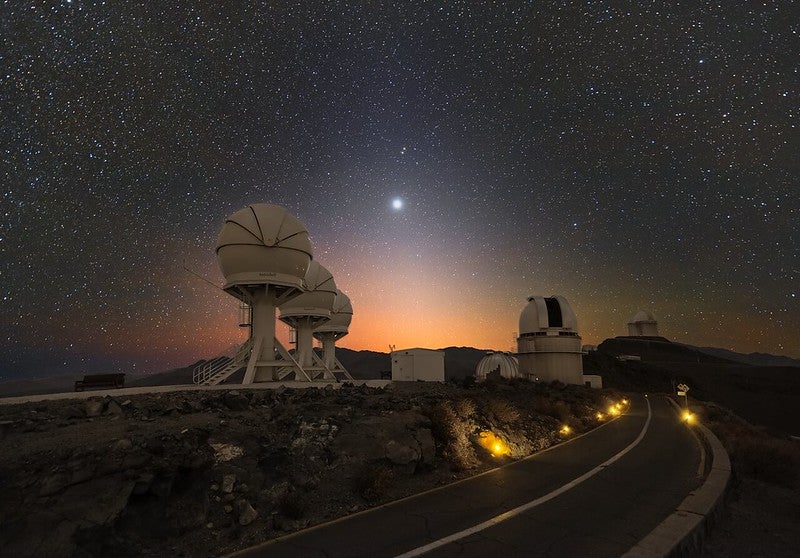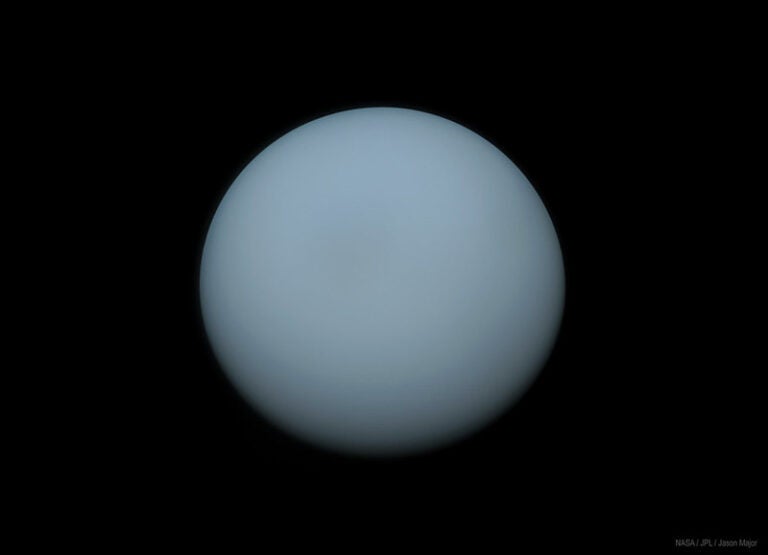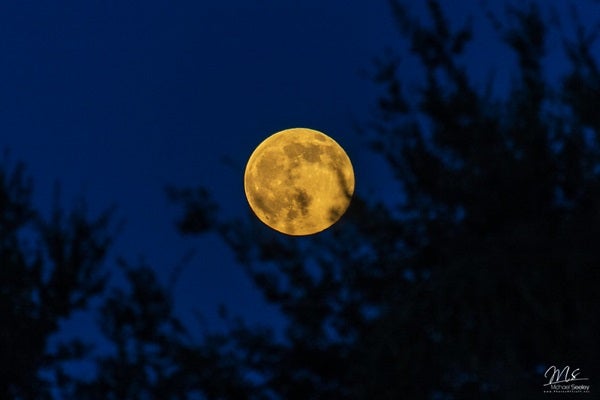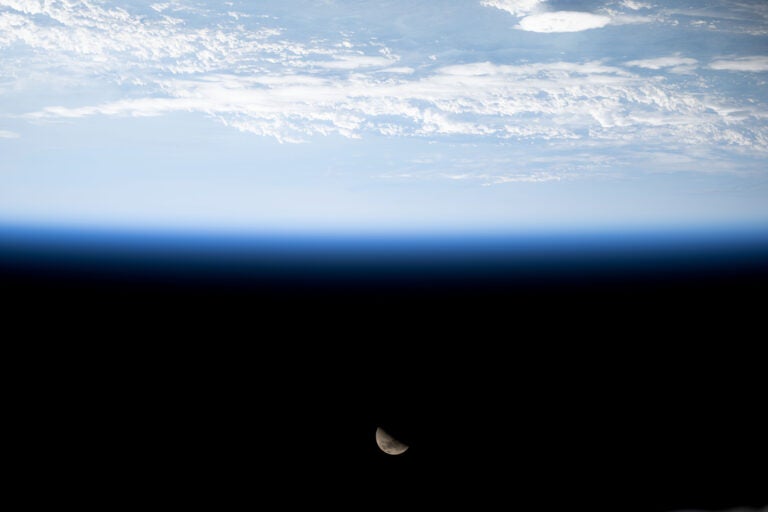
As February begins, Venus appears low in the western evening sky. The brilliant planet stands nearly 15° high an hour after the Sun goes down and dominates the faint background stars of Pisces the Fish. Although the inner world lies a healthy 45° east of the Sun, it doesn’t climb high because the ecliptic — the apparent path of the Sun across the sky that the planets follow closely — makes a shallow angle to the western horizon after sunset at this time of year. And, unfortunately, Venus dips closer to the horizon as the month progresses.
But not even twilight can keep the brightest planet down. Venus reaches greatest brilliancy at midmonth, when it shines at magnitude –4.9 — fully 10 times brighter than its nearest competitor, Jupiter.
This is the month to target Venus through a telescope because it sports a large disk and a pleasing crescent shape. On Feb. 1, the inner planet appears 32″ across and 38 percent lit. By the 28th, its diameter has swollen to 48″ while the Sun illuminates just 16 percent of its Earth-facing hemisphere.
You can use Venus as a guide to finding Saturn in early February. The ringed planet lies 11° to Venus’ lower left but shines modestly at magnitude 1.1, so you might need binoculars to pick it out of the twilight glow. A thin crescent Moon appears 1° to Saturn’s right the evening of Feb. 1.
Regrettably, Saturn’s low altitude means you won’t see it clearly in your telescope’s eyepiece. Better views await after it reappears before dawn this autumn.
The other outer planets fare much better on February evenings. Jupiter makes an attractive sight below the Hyades star cluster in Taurus the Bull. Its yellow-white color contrasts nicely with the red giant star Aldebaran, which may look like a cluster member but actually lies much closer to Earth. The giant planet shines at magnitude –2.4 and appears far brighter than Taurus’ luminary.
A telescope reveals Jupiter to be a dynamic object with colorful cloud tops arrayed in a series of alternating bright zones and darker belts. Its equatorial diameter at midmonth is 41″, nearly 3″ more than through the poles. You’ll also want to keep an eye out for the giant planet’s four bright satellites — Io, Europa, Ganymede, and Callisto — as they change relative positions from night to night.
Mars reached opposition in January and remains a fine sight during February. Although it dims noticeably this month, the planet glows brighter than magnitude 0.0 and overshadows the otherwise conspicuous stars of Gemini the Twins.
As Mars drifts away from Earth in February, its apparent diameter dwindles from 14″ to 11″. That’s still big enough to reveal the subtle surface markings that have long intrigued both amateur and professional astronomers. Wait for moments of steady seeing to see details snap into view.
Mercury comes to superior conjunction Feb. 9 and remains out of sight all month.
A waning crescent Moon occults the 1st-magnitude star Antares on Feb. 21. Observers in the southern third of South America will have the best views. From Buenos Aires, Antares heads behind the Moon’s bright limb at 7h35m UT and returns to view from behind the dark limb at 8h32m UT. Because Antares is a red supergiant star, it takes more than the blink of an eye to disappear and reappear.
The starry sky
I often refer to the constellation Octans the Octant during my planetarium presentations. That’s because I like to explain how to find the South Celestial Pole using Crux the Cross and the Pointer Stars: Alpha (α) and Beta (β) Centauri.
Although Octans doesn’t rank among the bright constellations, one part of it is fairly easy to recognize, at least on star charts: the “trapezium” comprised of the stars Sigma (σ), Chi (χ), Tau (τ), and Upsilon (υ) Octantis. Don’t confuse this group with Orion’s more famous Trapezium Cluster, which lies at the center of the Orion Nebula (M42). Mathematicians define a trapezium as a four-sided figure with one pair of parallel sides. The four stars in M42 come close to this definition, but I think the four in Octans are equally good.
The Octans asterism plays a pivotal role when using the pole finder integrated into some equatorial mounts. These are small telescopes with crosshairs that allow you to align the mount’s polar axis accurately. One member of this stellar quartet — Sigma — provides the Southern Hemisphere’s best Pole Star. The actual pole resides a bit more than 1° from Sigma, so when using such a finder you need to estimate the offset between Sigma and the South Celestial Pole. It helps that Sigma, Chi, and Tau form an arrowhead that points to the pole. And with a low-power eyepiece, you often can include all three stars and the pole in the same field.
Try to see how many of these stars you can find with the unaided eye. All lie close to the naked-eye limit. The brightest, Chi, glows at magnitude 5.3, followed by Sigma at magnitude 5.4, Tau at magnitude 5.5, and Upsilon at magnitude 5.8.
Your chances of spotting the trapezium stars improve under a dark sky and with a more southerly location, which places them higher and thus farther from the dimming caused by atmospheric extinction.
Star Dome
This map portrays the sky as seen near 30° south latitude. Located inside the border are the cardinal directions and their intermediate points. To find stars, hold the map overhead and orient it so one of the labels matches the direction you’re facing. The stars above the map’s horizon now match what’s in the sky.
The all-sky map shows how the sky looks at:
10 p.m. February 1
9 p.m. February 15
8 p.m. February 28
Planets are shown at midmonth









